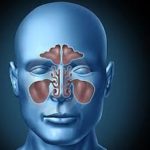 A reader asked me to do a post on sinusitis since it is such a common problem and there is a lot of misunderstanding about when antibiotics should be taken for this condition.
A reader asked me to do a post on sinusitis since it is such a common problem and there is a lot of misunderstanding about when antibiotics should be taken for this condition.
Sinusitis occurs when the lining of the paranasal sinuses becomes inflamed. It is the 5th leading reason for antibiotic prescriptions at doctors’ offices. However, only 2-10% (closer to 2%) of cases of sinusitis are due to a bacterial infection.
What causes sinusitis?
Causes of sinusitis may be non-infectious, such as allergens (example pollen) and environmental irritants (example cigarette smoke), or infectious such as from viruses, bacteria, and fungi. Viruses cause 90-98% of the cases of acute sinusitis.
What are some of the symptoms of sinusitis?
Symptoms of sinusitis are many and include discharge from the nostrils that may be thick, colored and opaque, congestion or blockage of the nostrils, focal pressure or pain of the face (example: forehead with frontal sinus infection, or cheeks with maxillary sinus infection), decreased sense of smell, cough and fever.
How should sinusitis be managed?
Because most cases of sinusitis are viral or allergic in origin, the treatment should usually be focused on managing the symptoms. Unfortunately, as many as 80% of persons going to the doctor for sinusitis, get prescribed antibiotics.
Non-antibiotic treatments include topical steroids (sprayed into the nostrils), especially in patients with allergies; saline spray can help relieve congestion; acetaminophen (Tylenol) and anti-inflammatory drugs such as naproxen (Aleve) can be used to relieve pain and fever. Adequate hydration is also very important.
Though popular, antihistamines and decongestants are felt not to make a major difference in overall positive outcome. Instead, they may cause side effects such as dry mouth and drowsiness.
3 signs that you may need antibiotics for your sinusitis
Up to 10% of cases of sinusitis are caused by bacterial infection and antibiotics are indicated in these cases. Many of them actually started out as a viral upper respiratory infection (URI), but after several days, superimposed bacterial infection developed. Three features that should prompt suspicion for a bacterial infection are:
1 – Persisting symptoms or signs of sinusitis lasting for 10 or more days without any improvement. With viral URIs, one usually starts feeling better by the 6th day of symptoms.
2 – Severe symtoms or signs present from the onset of illness and lasting for at least 3-4 days. These symptoms/signs include high fever (>39 degrees Celsius/102 degrees Fahrenheit), discharge from the nostrils that is thick, colored, and opaque, and facial pain. Note that the fever with a viral URI usually occurs just before onset of the respiratory symptoms, is accompanied by body aches, headache, etc, and usually lasts for only 1-2 days.
3 – Worsening symptoms or signs at day 5-6 of a viral URI, after there was initial improvement. These new symptoms/signs include fever, headache, and/or increased, thickened nasal discharge. Note that with a viral URI, there can be thickening and discoloration of the nasal discharge after 4-5 days but overall the affected person starts feeling better, and the mucous starts clearing again by the 8th day, or dries up altogether.
For uncomplicated bacterial sinusitis in adults, the duration of antibiotic therapy is 5 to 7 days. If symptoms worsen after three days of treatment, or are not improved after five days of treatment, alternative therapy has to be considered.
Given the statistics showing that the overwhelming majority (90%) of sinusitis cases are due to viral or allergic causes, it is unfortunate that 80% of persons presenting to the doctor with sinusitis, leave the office with a prescription for an antibiotic. Part of the problem, like it or not, is that patients frequently pressure their doctors for antibiotic prescriptions, and many doctors yield under pressure.
If patients were more aware of the causes of sinusitis, and the potential serious adverse effects of antibiotics, they may be less likely to seek out antibiotic prescriptions.
In a future post, I will talk about complicated sinusitis.
Reference: IDSA Clinical Practice Guideline for Acute Bacterial Rhinosinusitis in Children and Adults
Leave a Reply